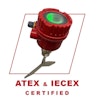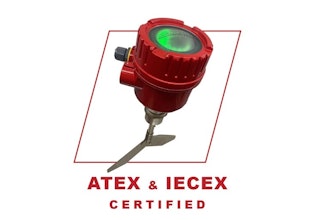Like so many lean tools, the Andon tool has its roots in the Toyota Production System. The word Andon literally means "lamp" in Japanese. As first conceived, when an operator on an assembly line would encounter a problem (defined as any deviation from the Standard Work Instruction), the operator would flip a switch that turned on a light over the work station. The team leader would see the light and immediately head to the workstation to help the operator. The team leader and the operator would work to fix the problem at the workstation, even if that meant stopping the line.
Over the years, many companies have adopted the tool using widely different mechanisms to signal operators needing assistance. Bells, music, lights, flags, and many other visual and audible signals are commonly used. The key is to make it easy for the operator to signal for help and to make it noticeable for the helper so that he will quickly respond.
Be Creative, But Simple
The main variation with Andon is the type of mechanisms used to signal for help. Creativity is the only limit on how an Andon can be designed. This allows for quick visibility of problems to forecast potential delays in the product launch.
At a motorcycle manufacturing company, sticky notes are placed on a wall describing work to be done each month and by which engineer. A construction company uses flags to signal for help. There are many simple, low-cost ways to design an Andon System.
Use Andon Properly
Although many techniques can be used to set up an Andon system, there are some fundamental requirements for any system to function properly:
Proper Uses of the Tool
• To enable rapid containment of problems
• To directly connect an employee performing a task with the specific individual who can help solve a problem as soon as it is detected
Improper Uses of the Tool
• To institute Andon mechanisms without clear standard work procedures and strong problem solving processes.
Only One Responder
For each person who can signal the Andon, there must be one (and only one) person who should respond. Failure to do so creates ambiguity as to who should respond and risks providing a timely response to the person requesting the help.
Is It A Problem?
A successful Andon system requires application of many other lean tools, especially in creating clarity as to when there is a problem. Standard Work Instructions create high agreement as to the sequence, timing, and content in carrying out a task. Any deviation from these instructions constitutes a problem and a reason to signal the Andon. Error detection devices and visual management techniques are also helpful ways to clearly delineate normal from abnormal conditions.
Keep Records
Whenever the Andon is signaled, there should be a mechanism for recording the type of problem experience. This will initiate the problem solving process so that the same problem does not occur again. Without a problem solving process, recurring problems will greatly reduce the throughput of any process.
Andon Success
Designing the Andon System around these fundamental requirements will result in a process that quickly contains problems and provides input to an improvement cycle. Though the Andon process is conceptually simple, many organizations have struggled greatly with implementation because these design requirements have not been fully addressed.
How the Tool Relates to Lean Rules and Principles
Andon is an application of Rule #2: Clearly connect every customer and supplier. Andon connects the customer (operator requesting help) with a supplier (person that can provide assistance) through a visual or audible device. The connection designed through an Andon System unambiguously specifies the people involved and the way requests for help are made by each customer.
Andon supports the principle of Systematic Waste Elimination. The Andon process enables quick containment of quality problems, which prevents Waste of Defects. Coupled with a strong problem solving process, improvements driven through the Andon system eliminate defects from recurring.
Andon is also an application of Systematic Problem Solving. Implementing Andon necessarily means that problems are valued as opportunities to improve. Andon requires an organization to make the choice that problems should be exposed, as quickly as possible. Of course, these problems must be addressed with a problem solving approach that drives to the root cause of the defect.
The Lean Learning Center
www.leanlearningcenter.com


















